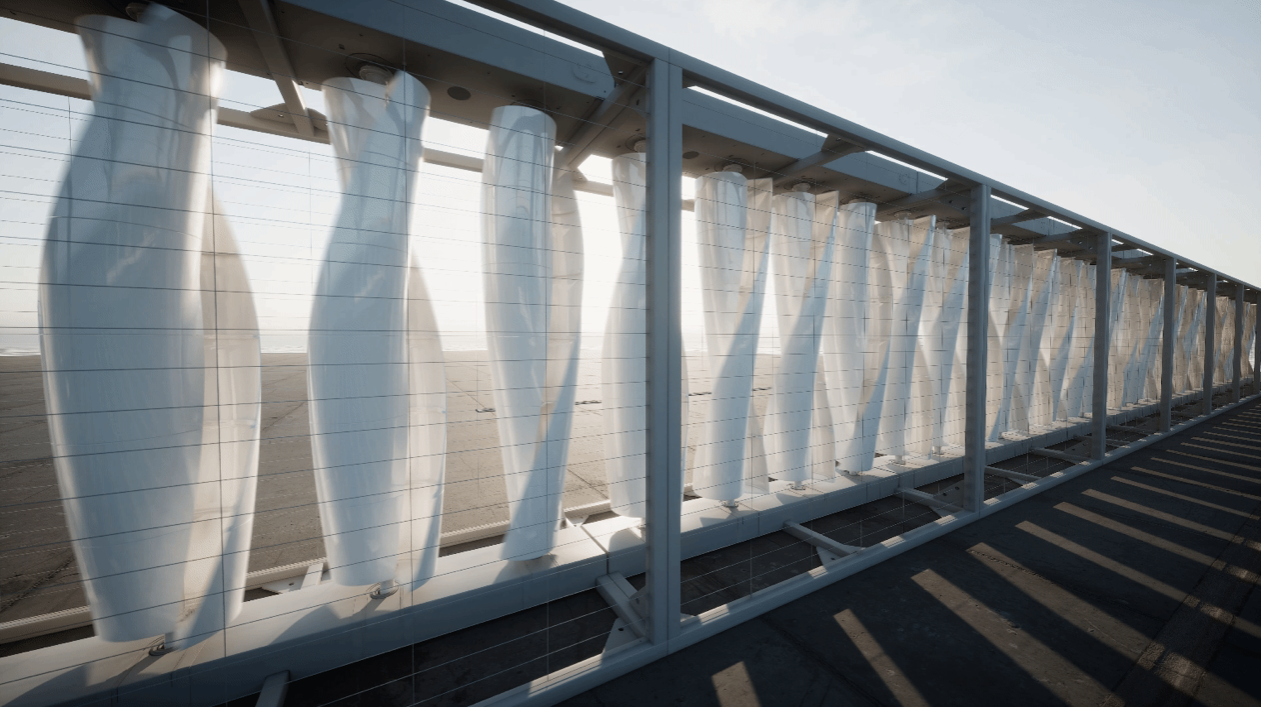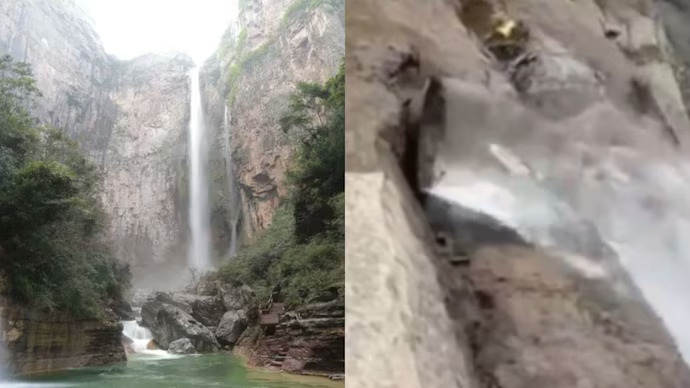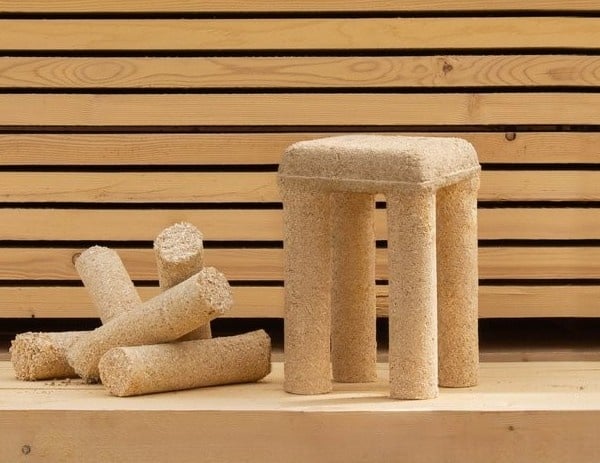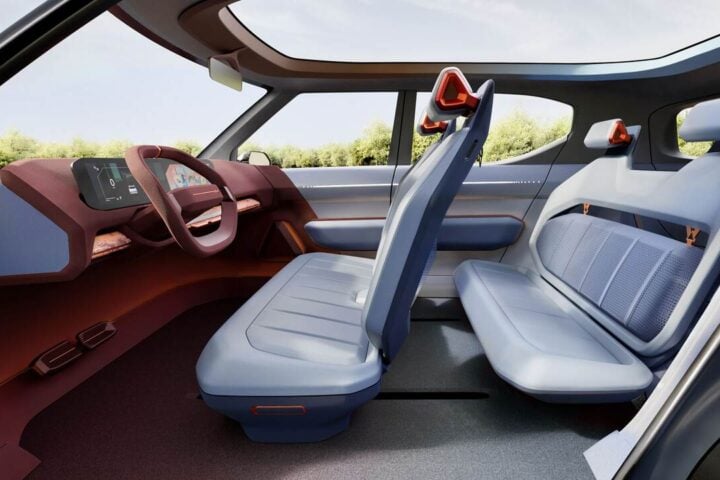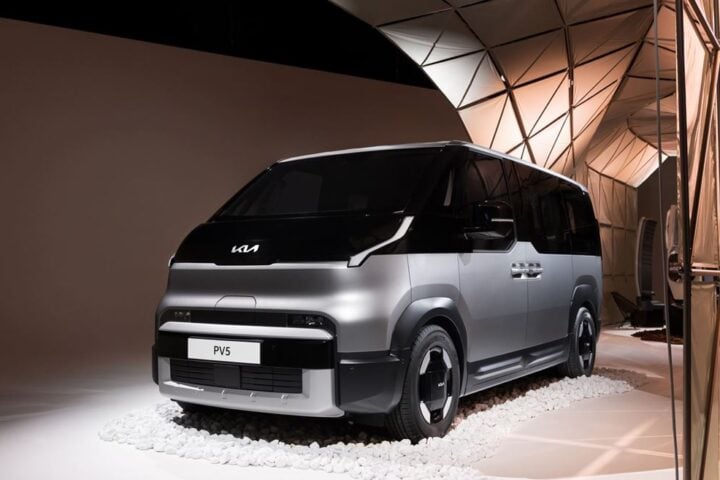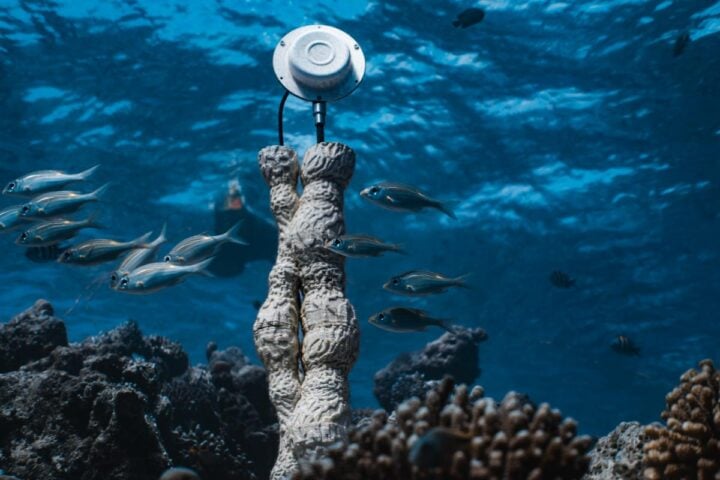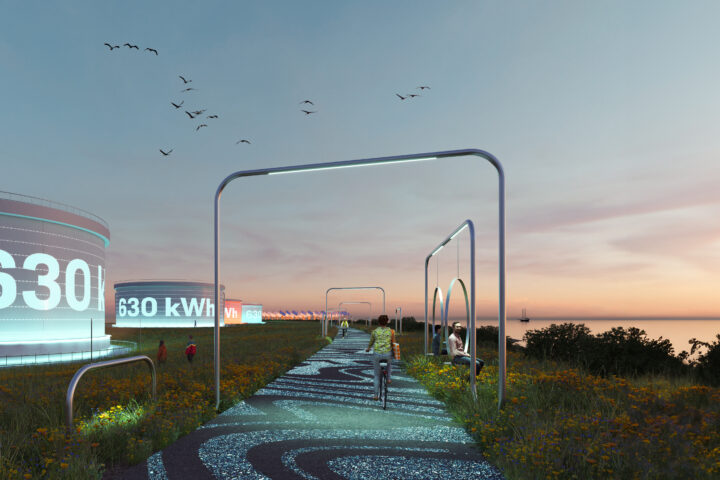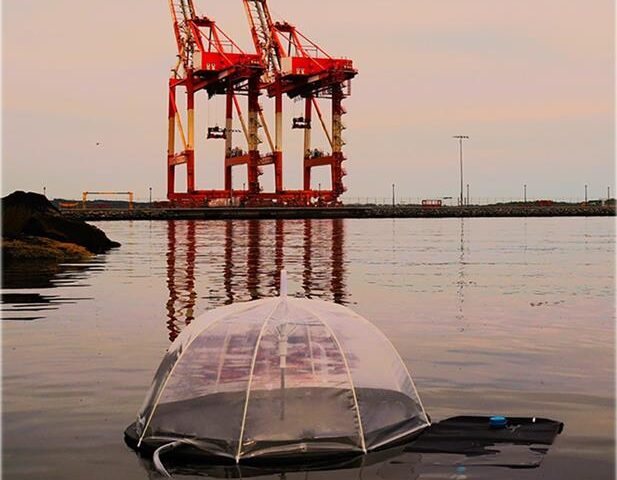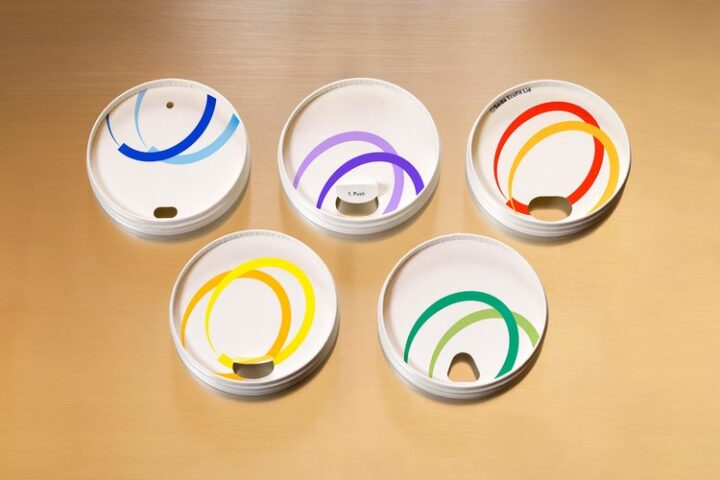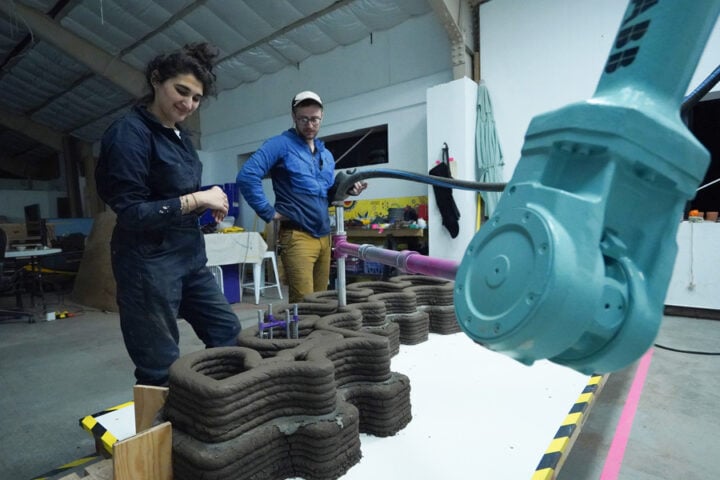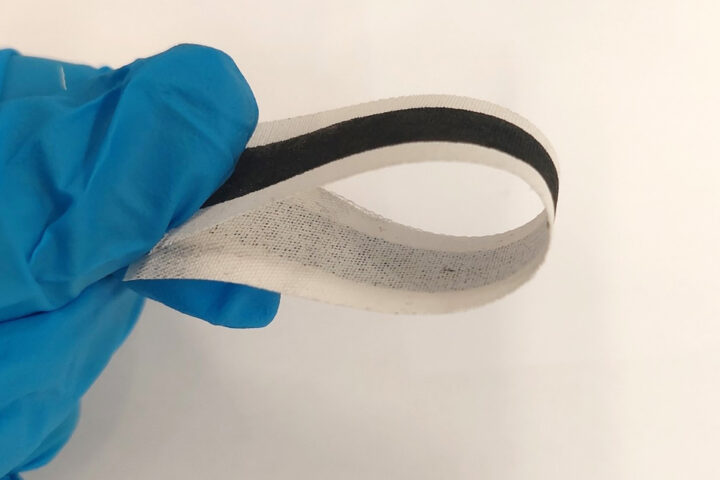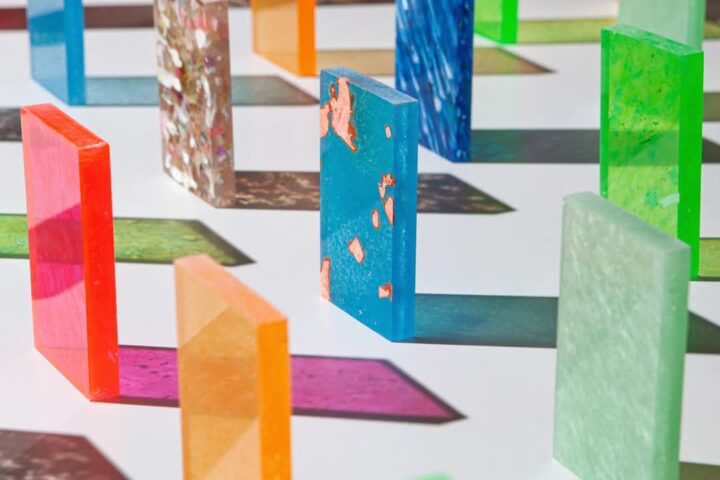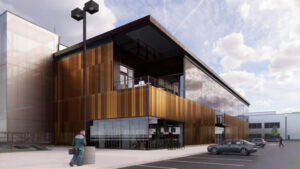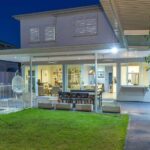Clean energy production is set to be brought into urban landscapes by a wind fence developed by New York-based designer Joe Doucet. Consisting of vertical wind turbines, the fence is modular and aesthetically pleasing. It is likely to be adopted in hotels, corporate buildings, and residential units. Joe Doucet unveiled a concept for an extraordinary wind turbine that looked nothing like the typical turbine dotting our landscapes. It was shaped like a sculptural wall that could harness power, instead of a monumental dandelion.
With the launch of a company named Airiva, that concept has now become a reality. Each wall features some 25 vertical turbines, each connected to a 400-watt generator for a total peak power output of 10 kW. These could either be connected to the grid or run through a battery system for storage, similar to a rooftop solar setup.
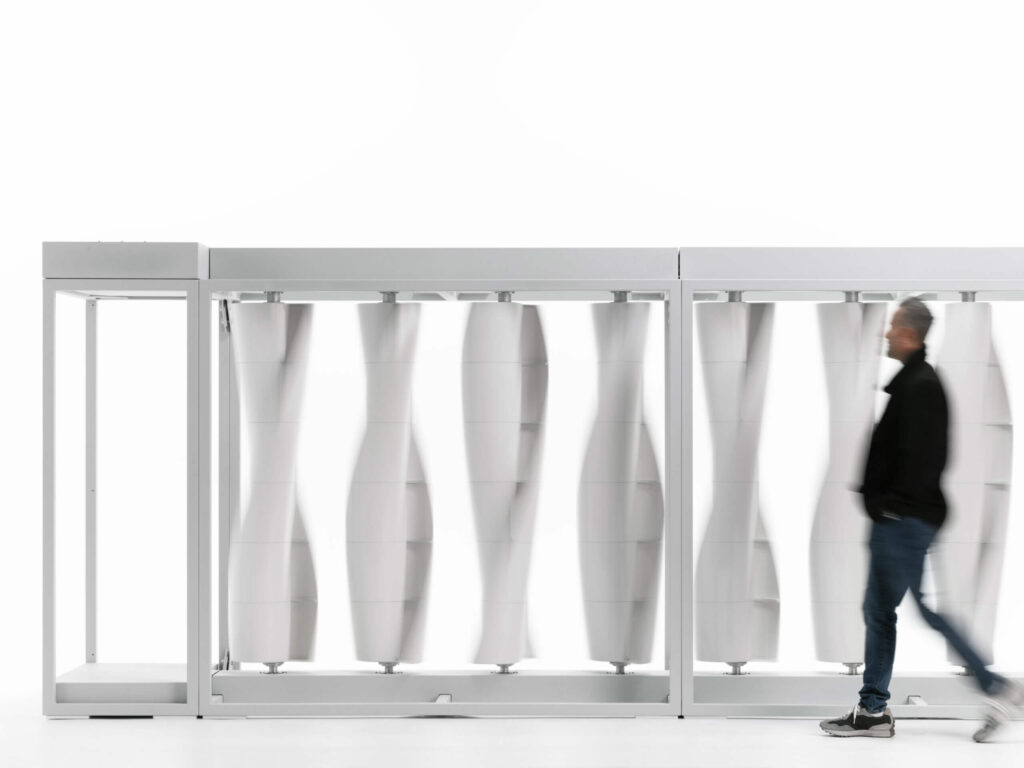
Doucet says they will be “almost silent,” producing “no more noise than a gentle whirling,” and safe for use around children, since there are no pinch-points in the rotation, and even a little one could easily stop the lightweight blades from turning. The noiseless movement of the wind turbines makes clean energy generation aesthetically pleasing. It helps make a statement about the company’s transition to a greener planet. Airiva plans to use 80% recycled material in its production.
Similar Post
Helical wind turbines aren’t new to the market, but Airiva is more than the sum of its parts. The team spent a long time calculating the right distance between each helix to get a net benefit from all turbines operating continuously. One unit (one frame with 8 helical turbines) can produce about 2,200 kWh per year.
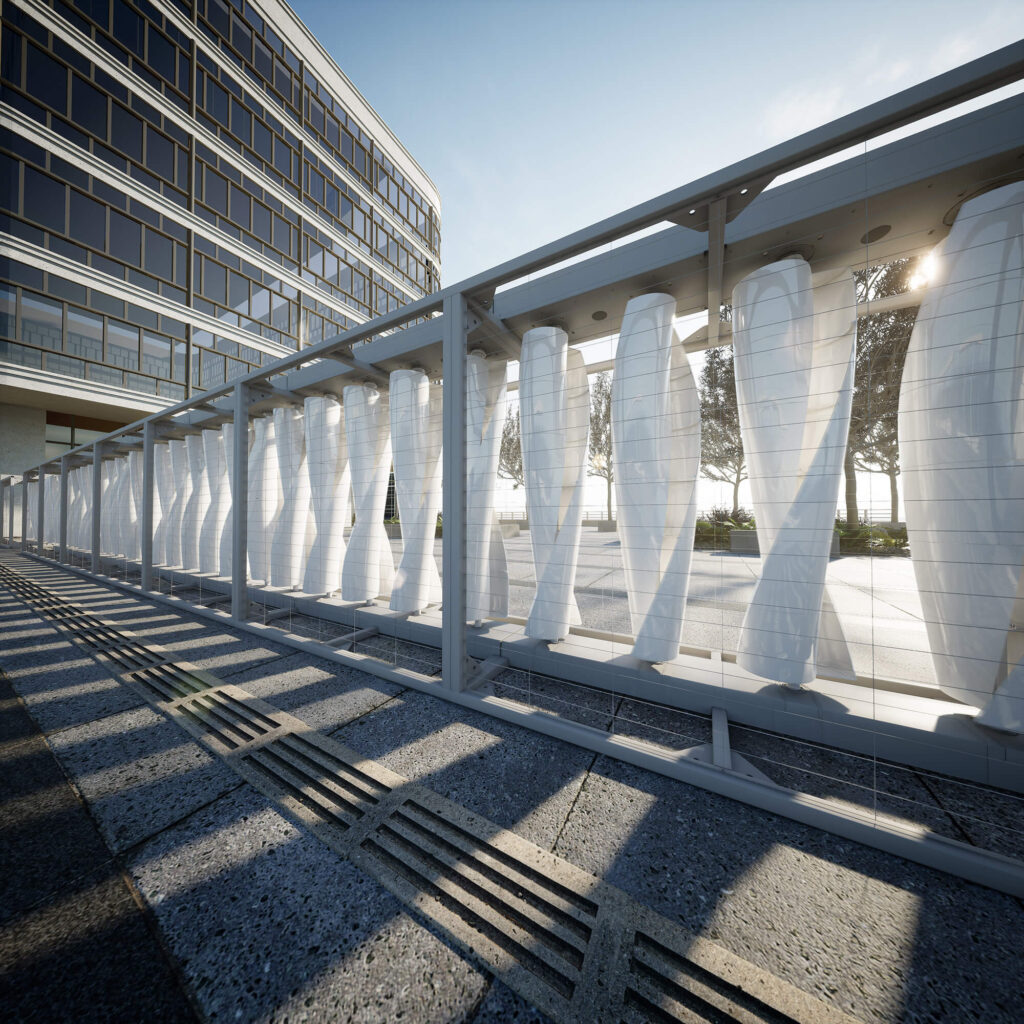
The turbines could run as a standalone system or be paired with a solar array to generate power at overlapping times, as they are capable of catching the wind from any direction. Doucet says he wants to keep these walls “very affordable” and is “interviewing potential partners to bring this thing to market.”
The advantage of distributed energy systems is that they see fewer energy losses during transmissions since they are generated so close to the site of usage. A pretty wind turbine is just a sculpture if it isn’t efficient. To find the perfect balance between beauty and efficiency, the team experimented with 16 blade configurations before narrowing their selection to 4. It was tested in a facility outside of Seattle.

Two out of those four designs prevailed. They were further tested in a wind tunnel at the University of Washington. Of these two, the helical version came out on top. Doucet’s turbines can deliver ten kilowatts all day and night. Considering the average US home uses around 30 kWh of energy daily, Doucet’s turbines are more than enough; in fact, they could power half your street.
Doucet’s hypnotizing wind turbine looks like art but can power your home’s electricity. The impressive wall of wind turbines delivers aesthetics and yields 2,200 kW of noiseless energy. Urban landscapes could be difficult to install giant horizontal turbines to tap into wind power. A sleeker, eye-pleasing turbine like Airiva’s brings a renewed solution.
